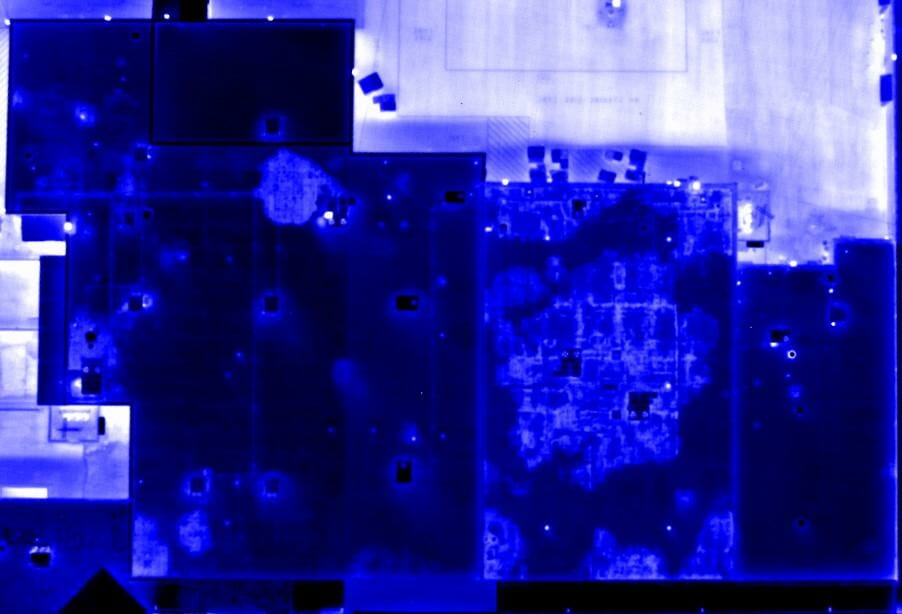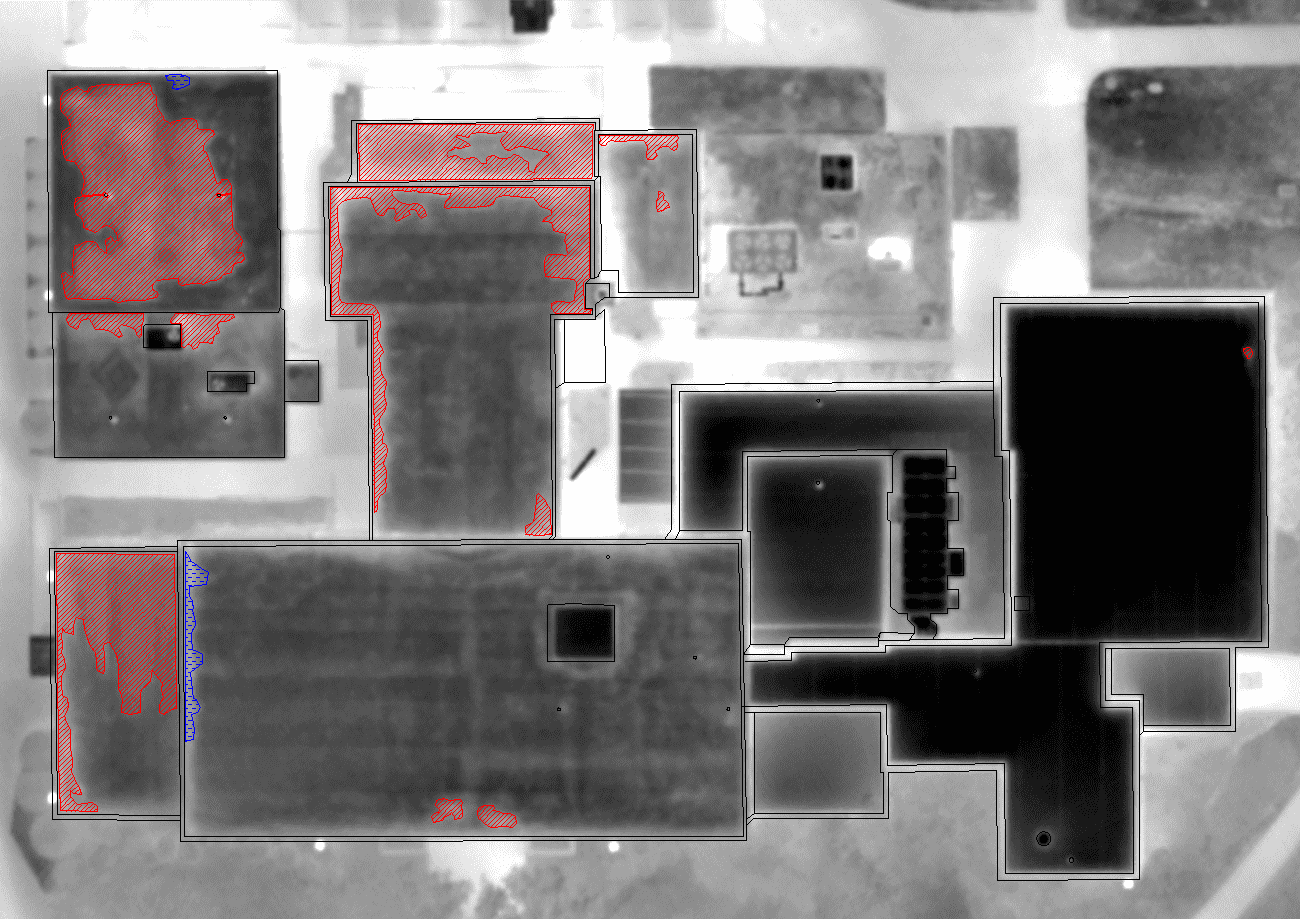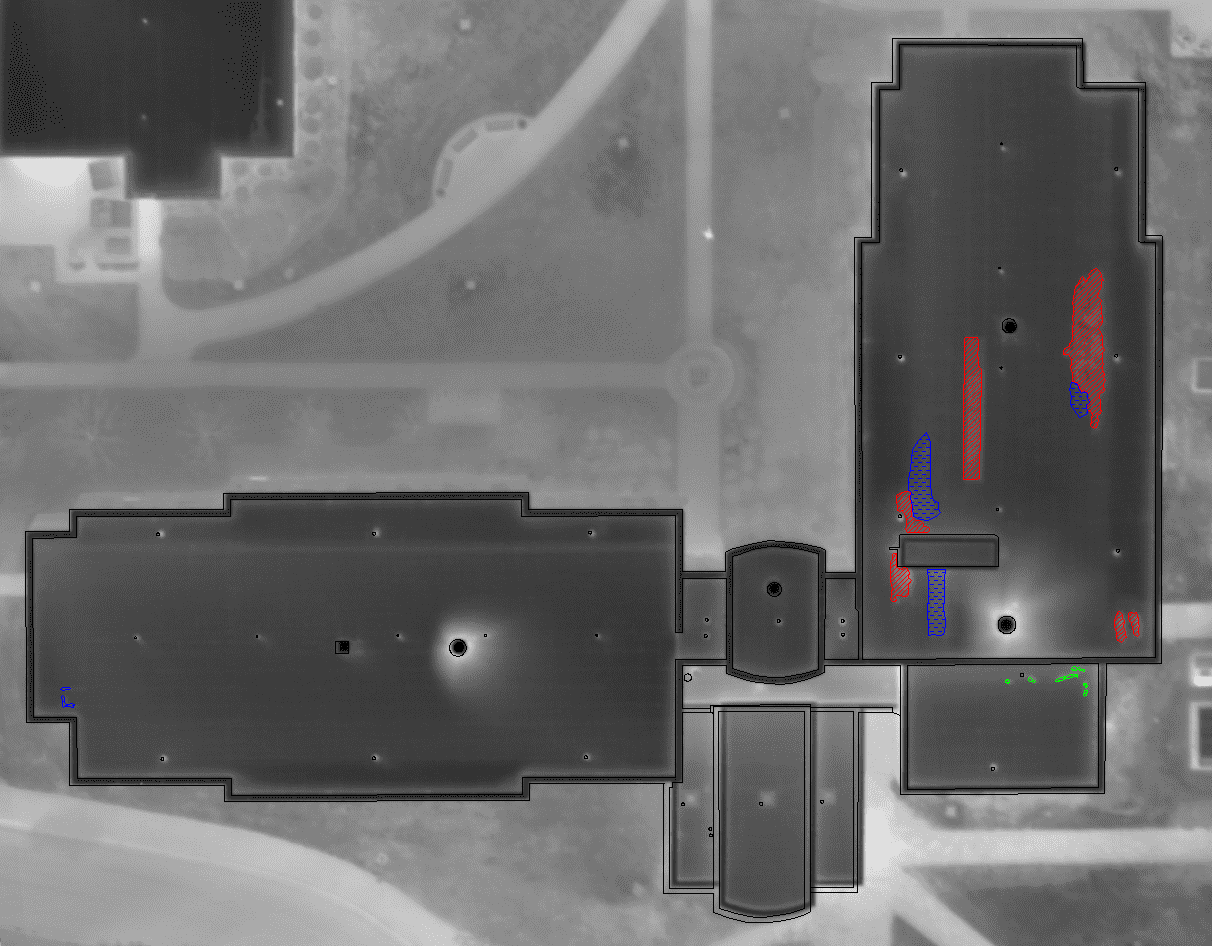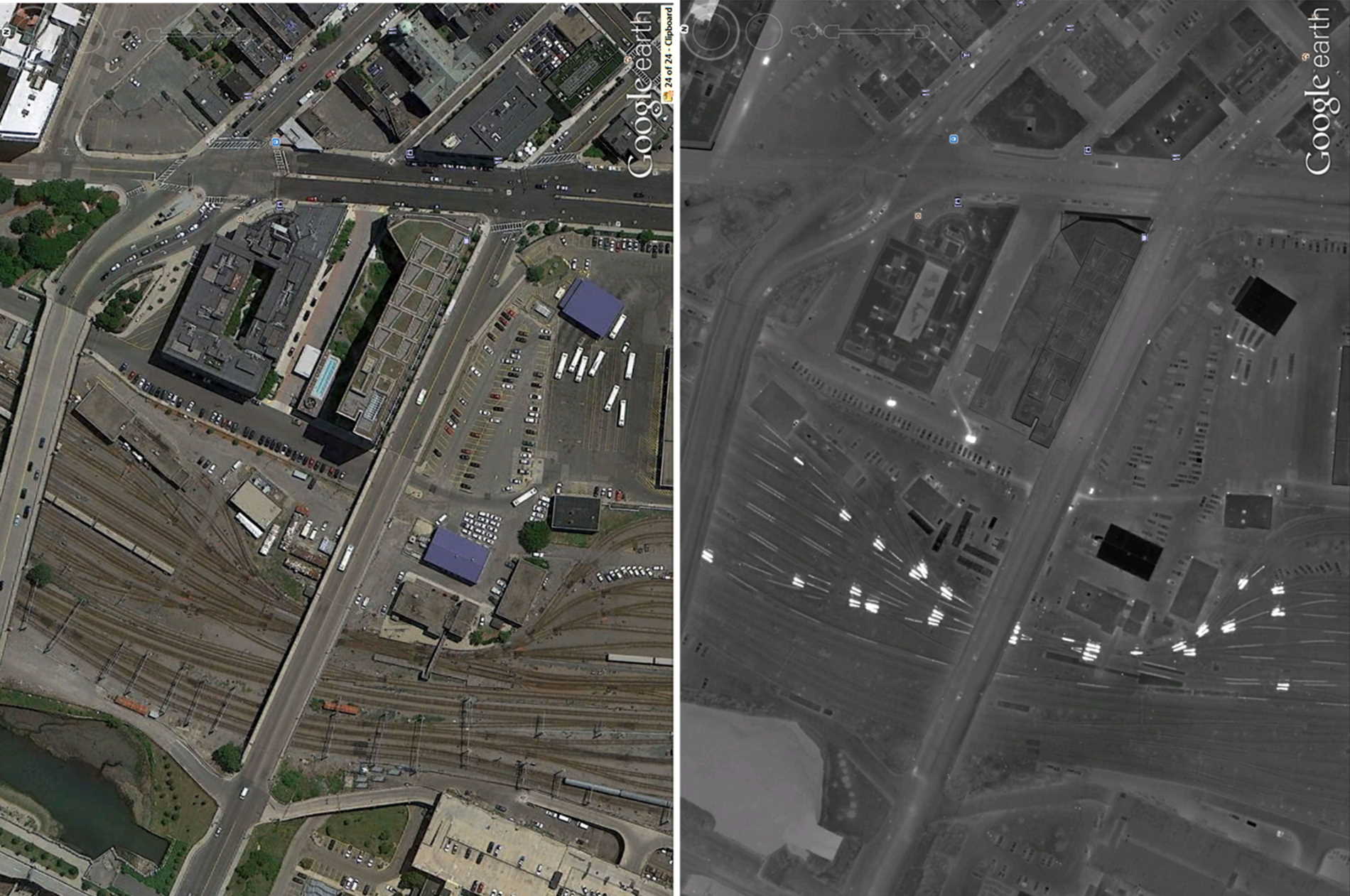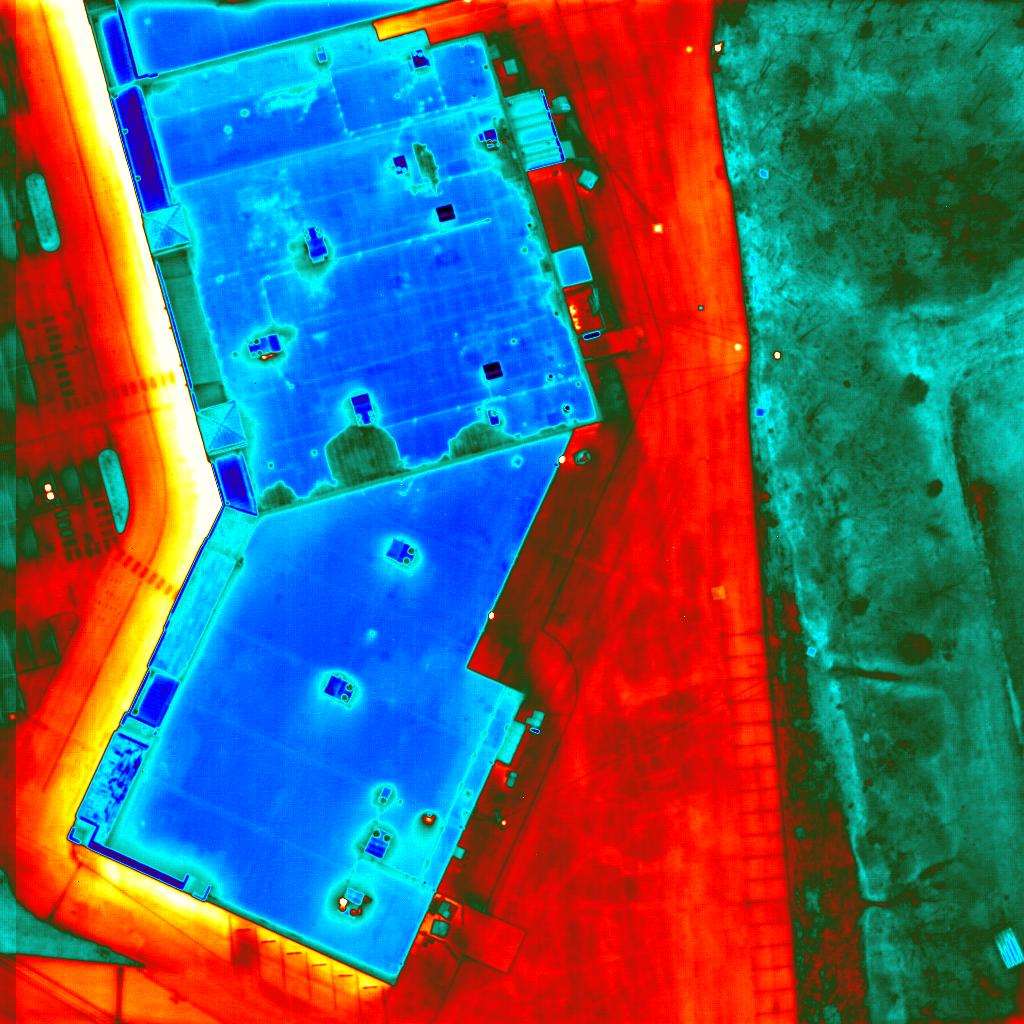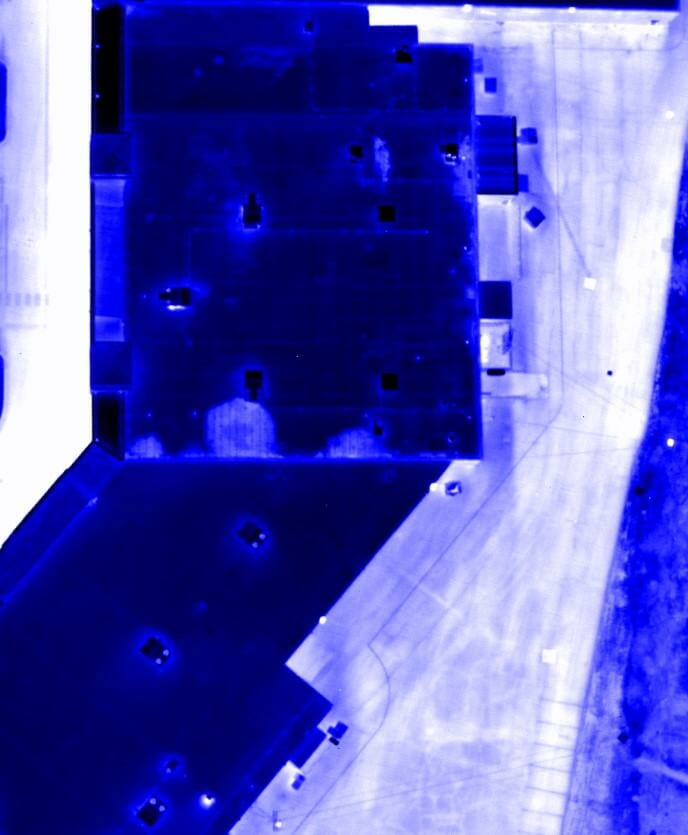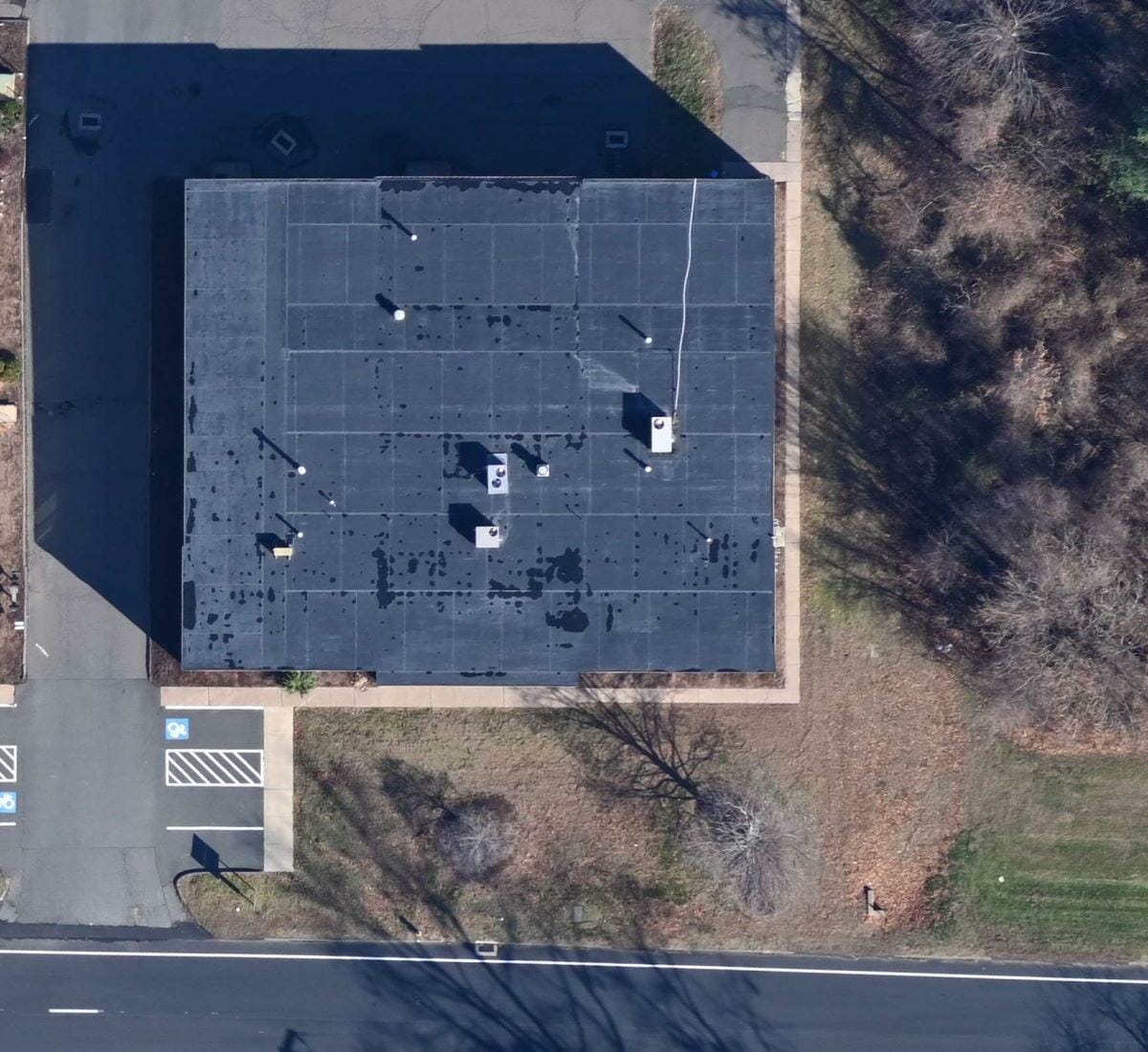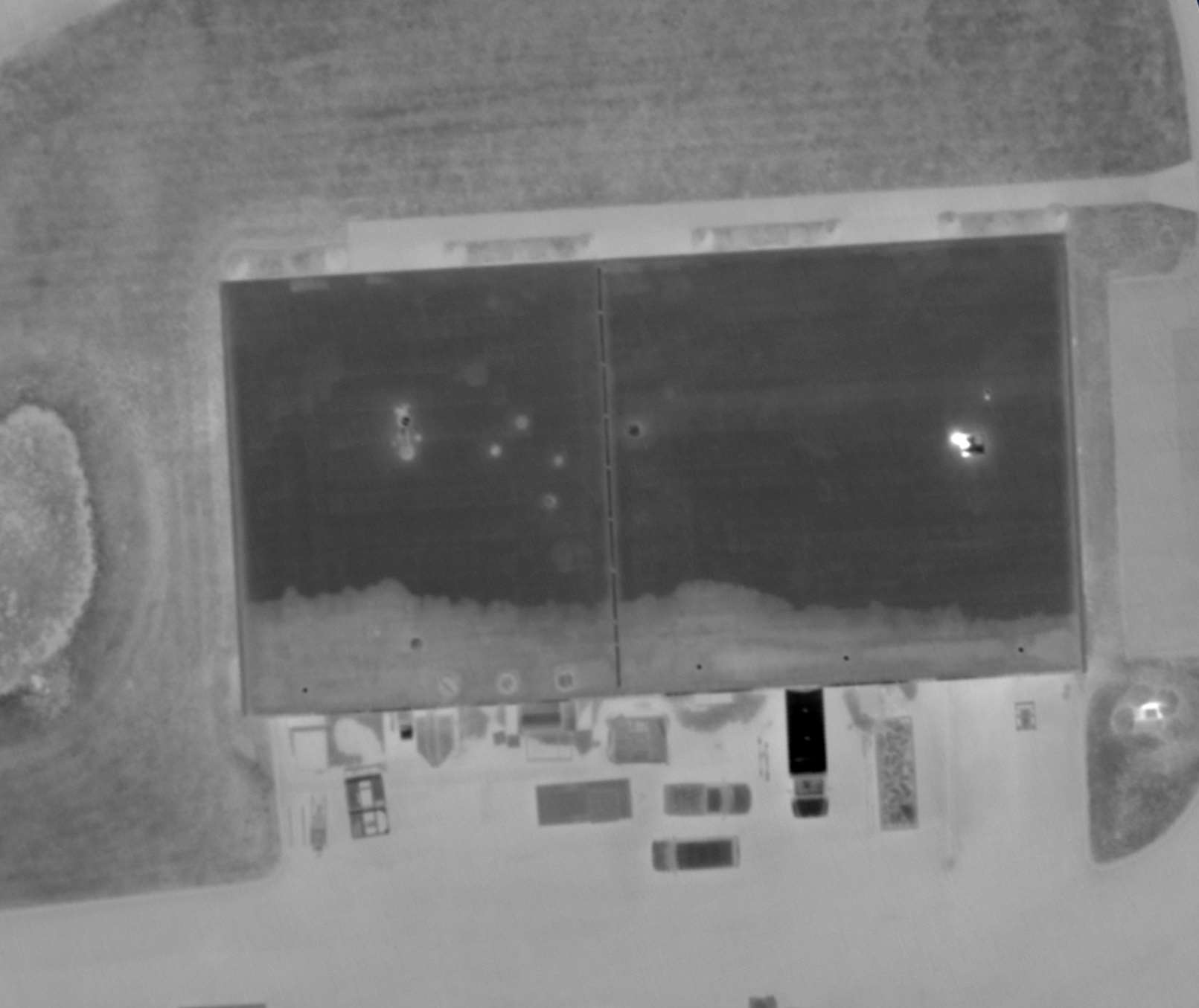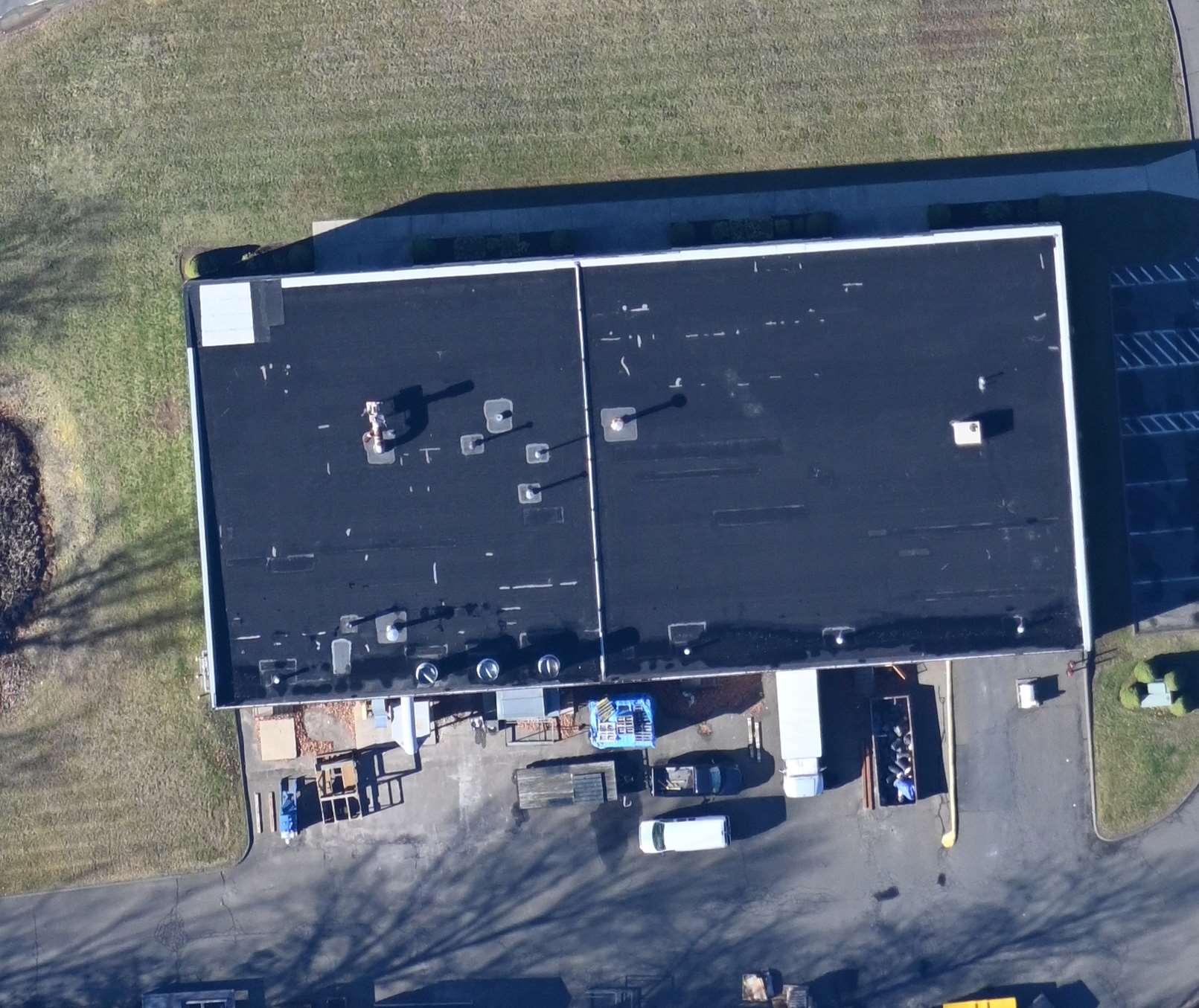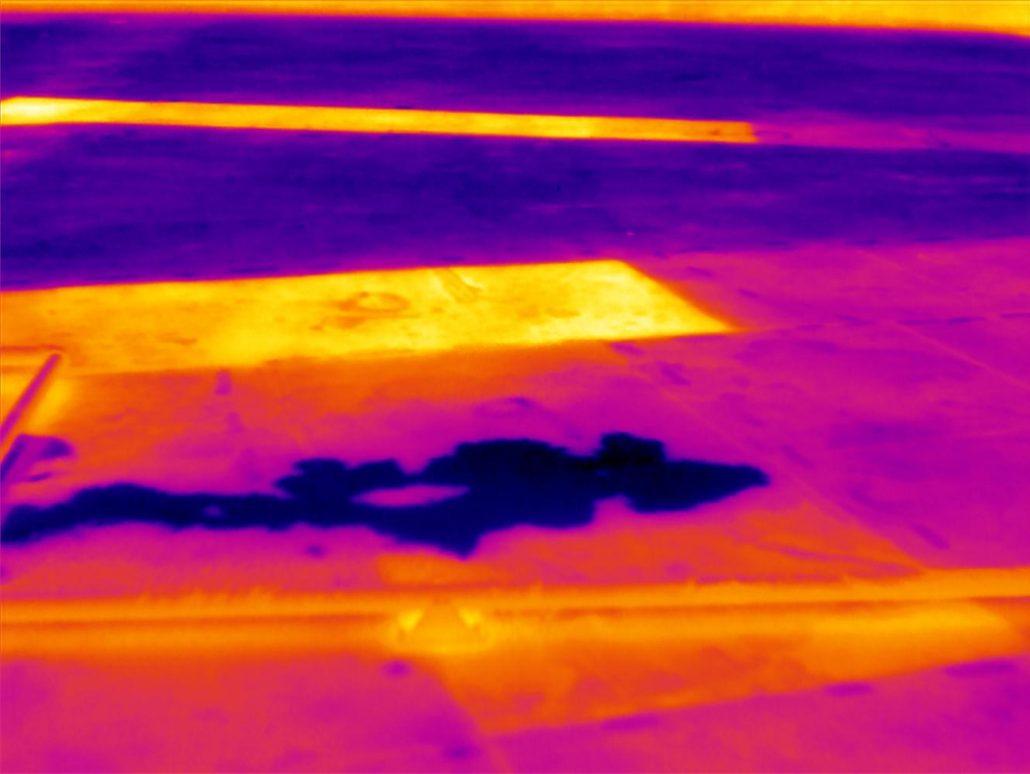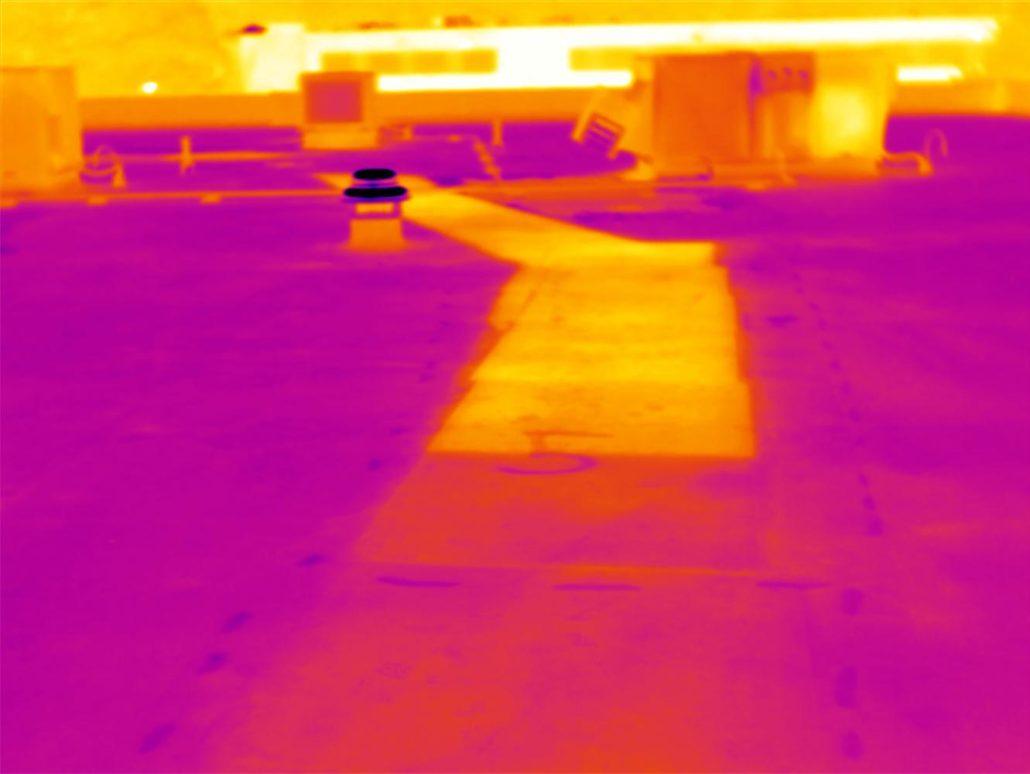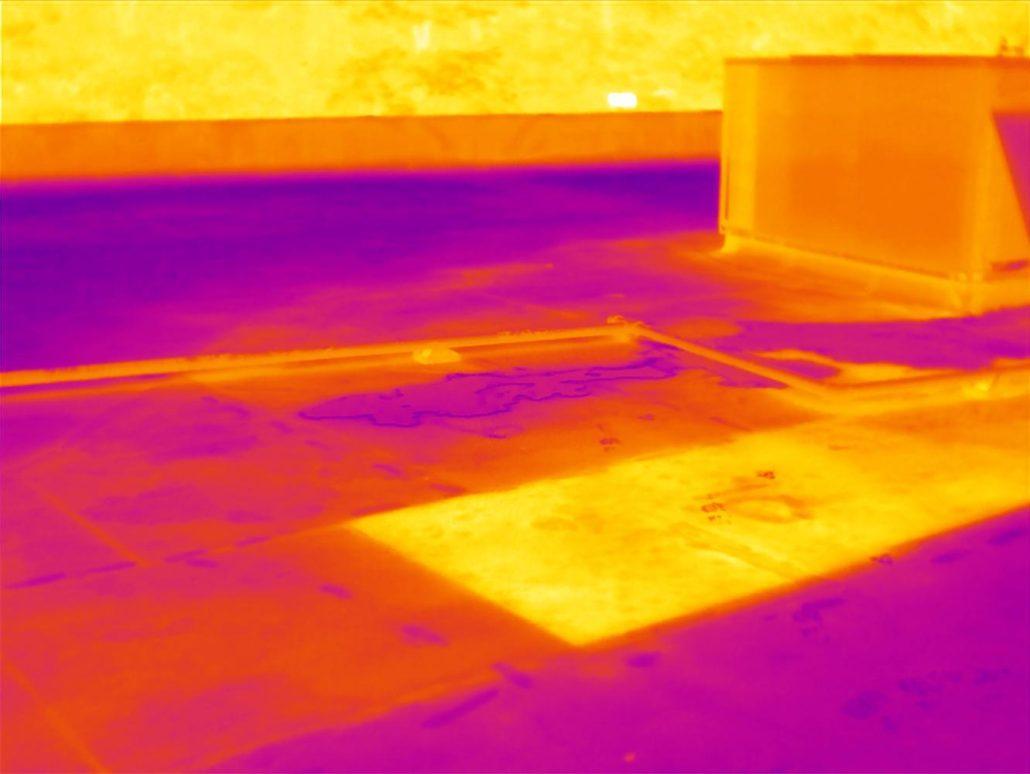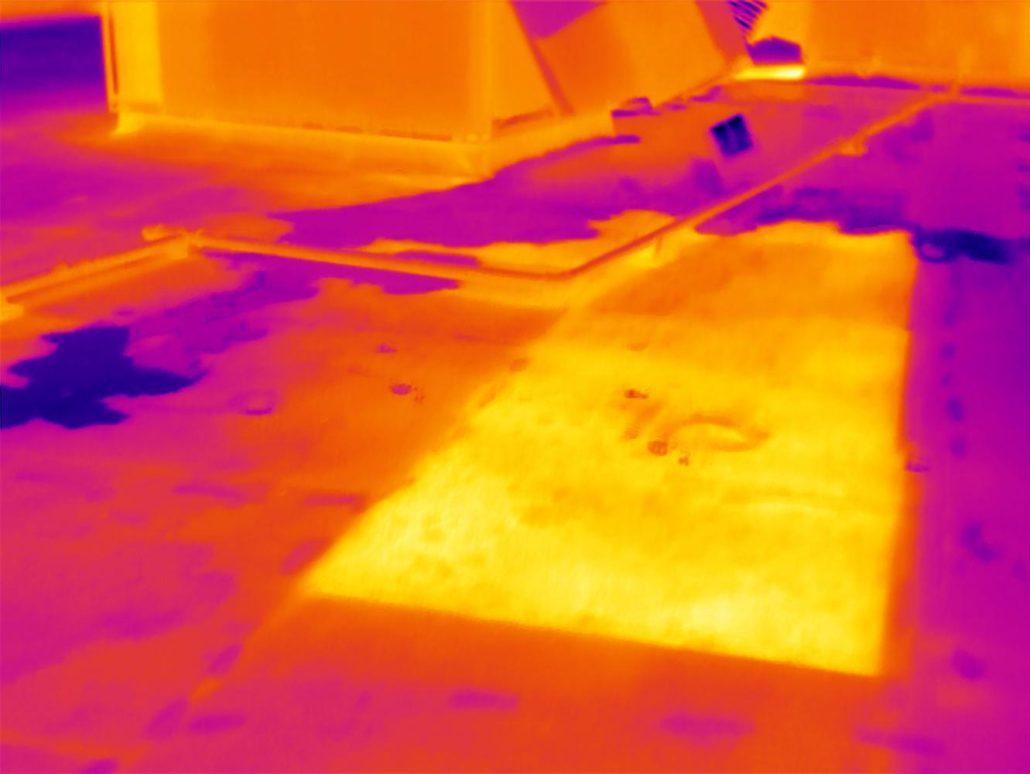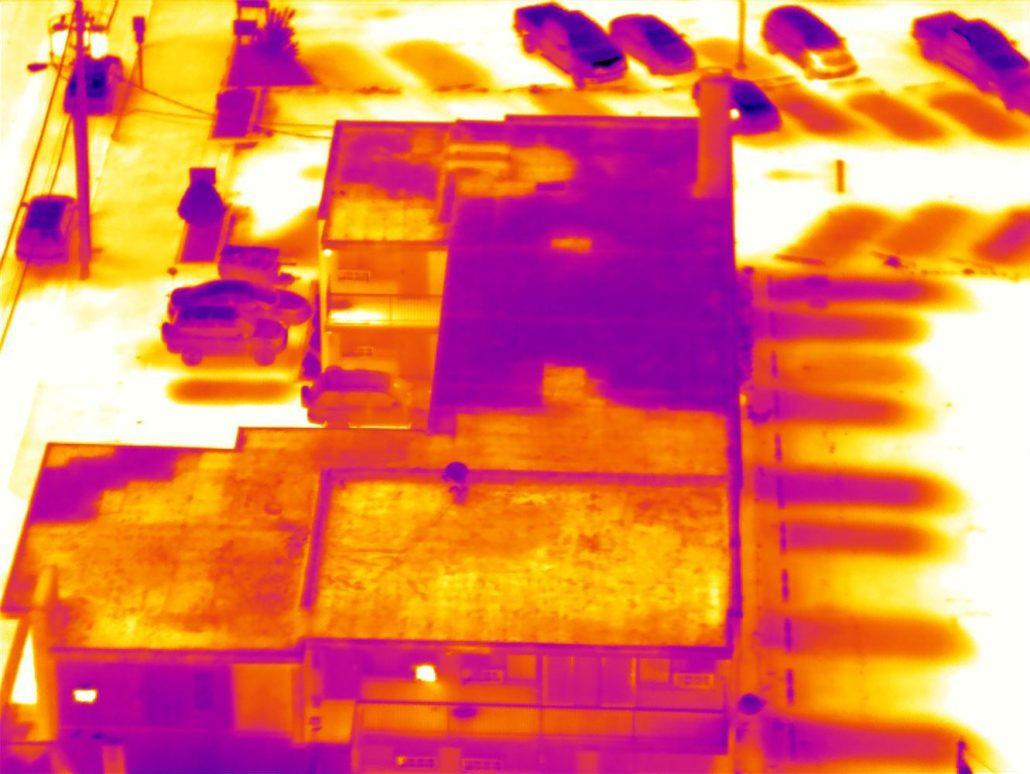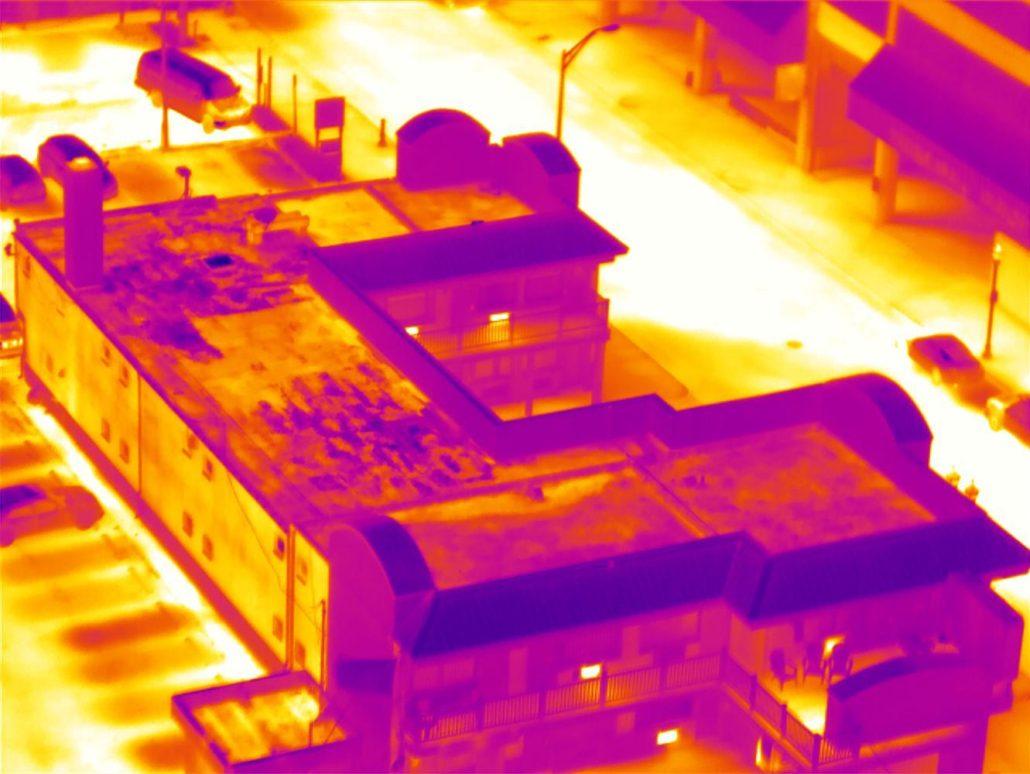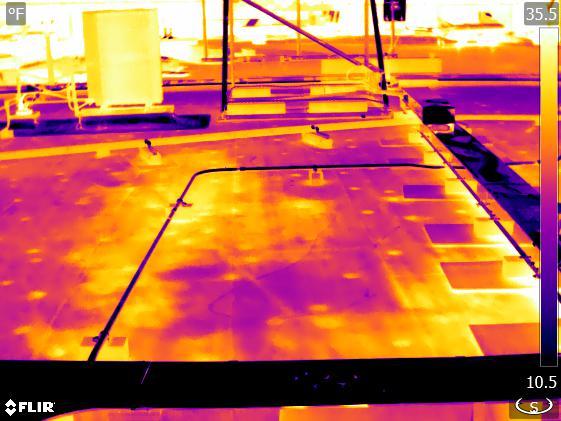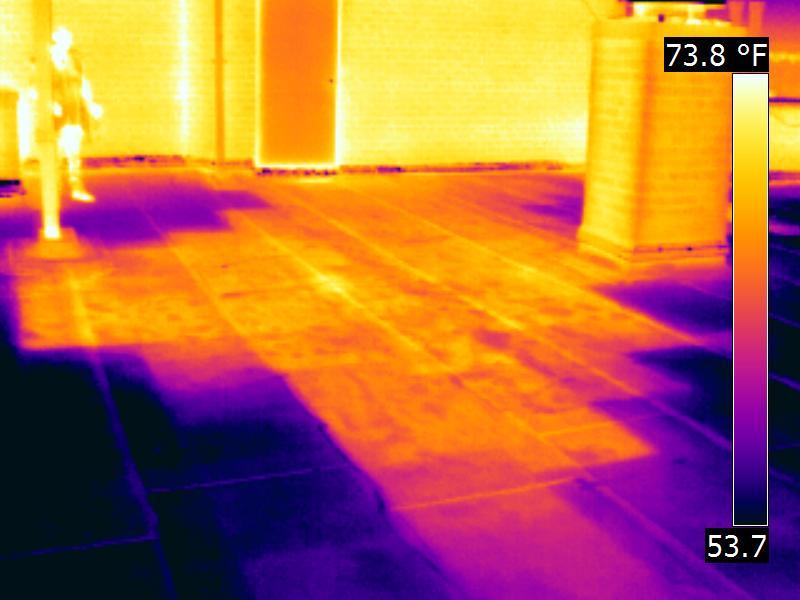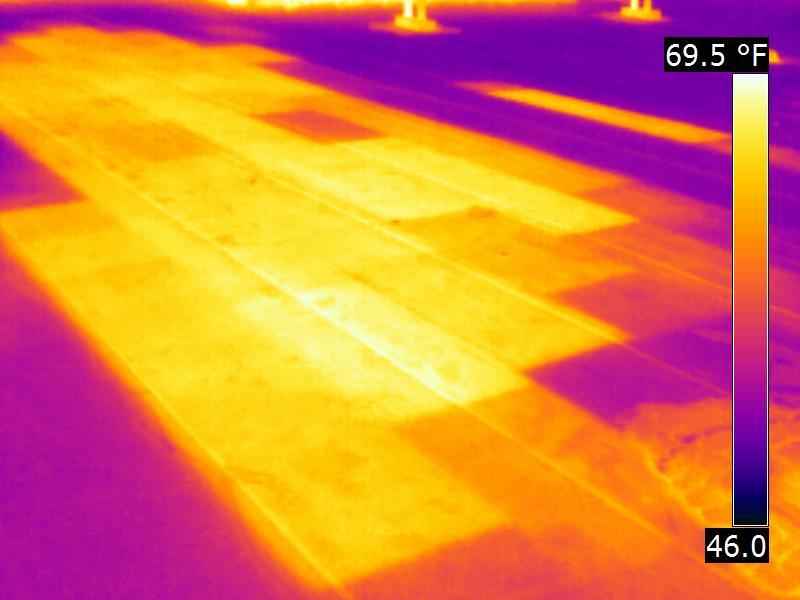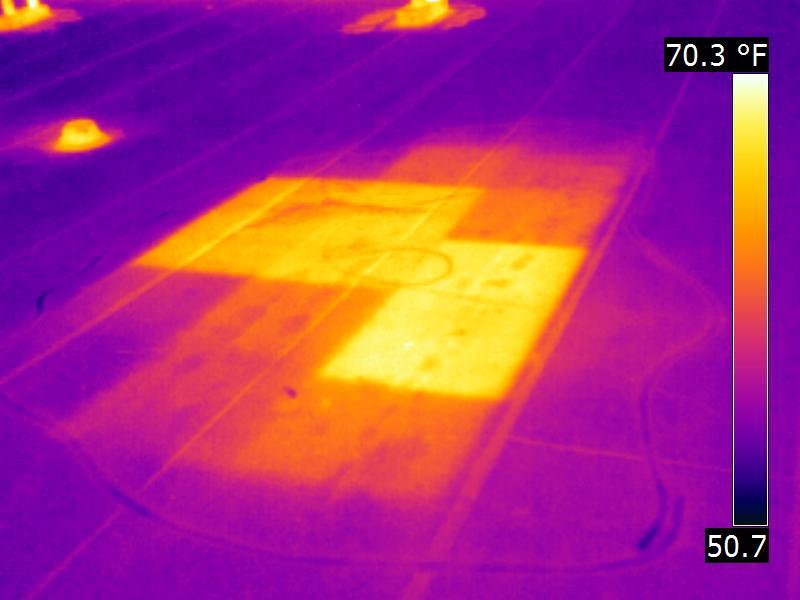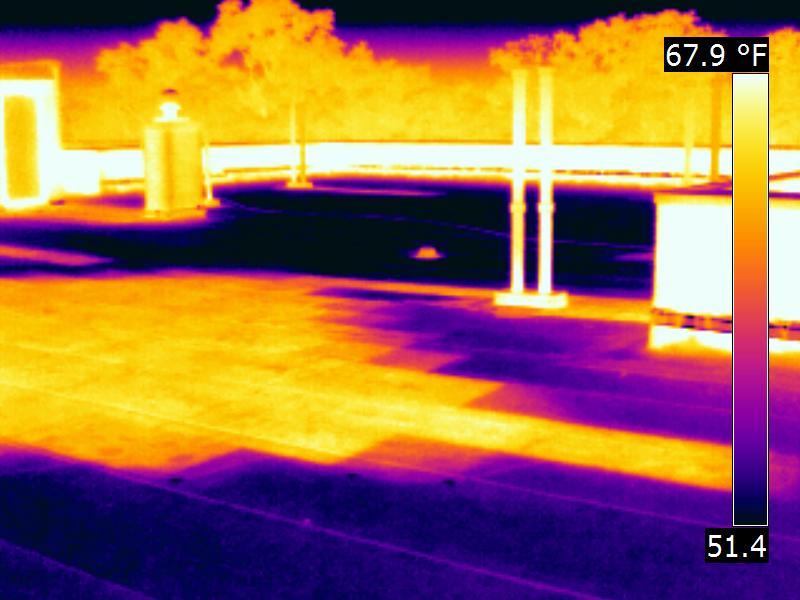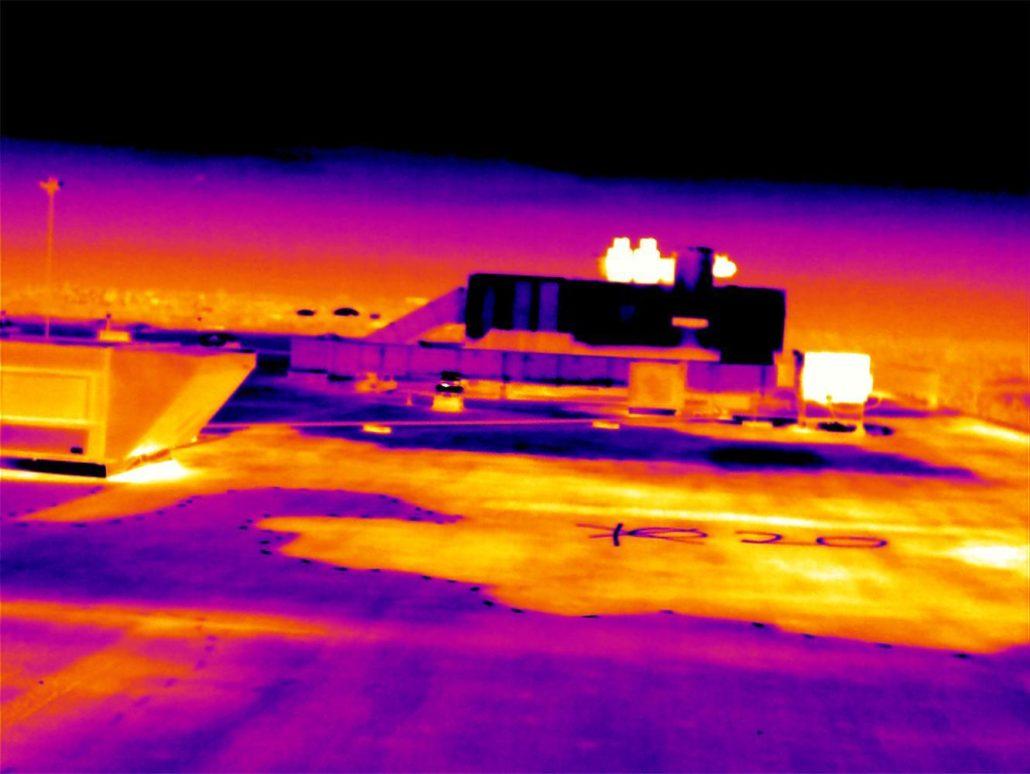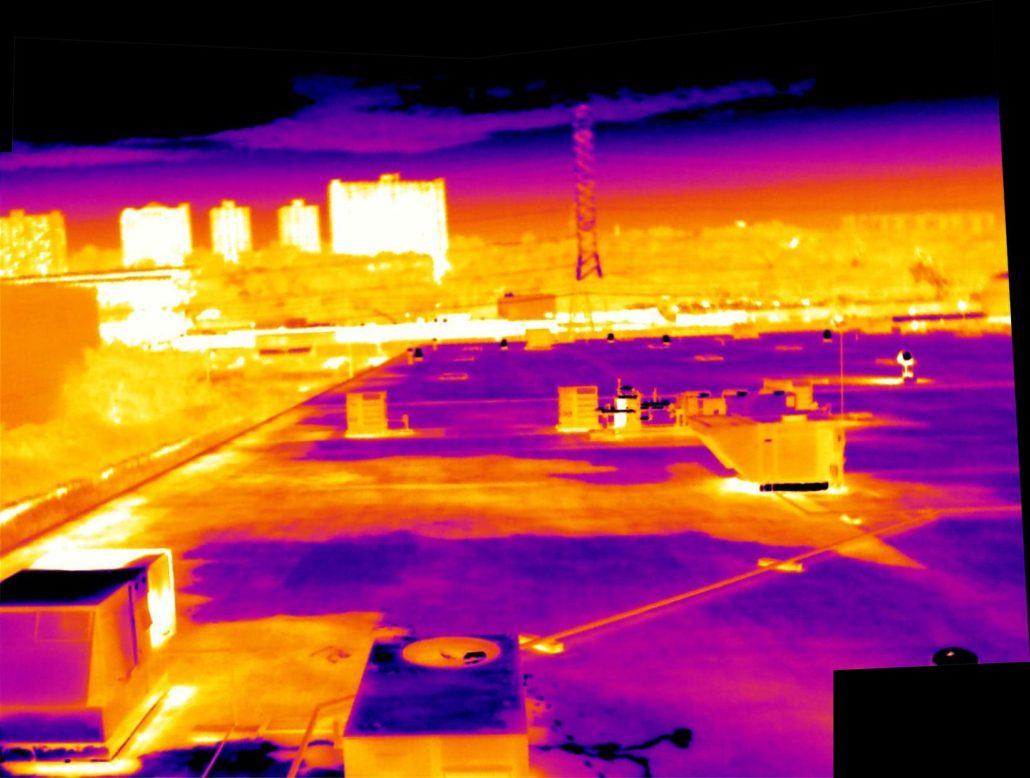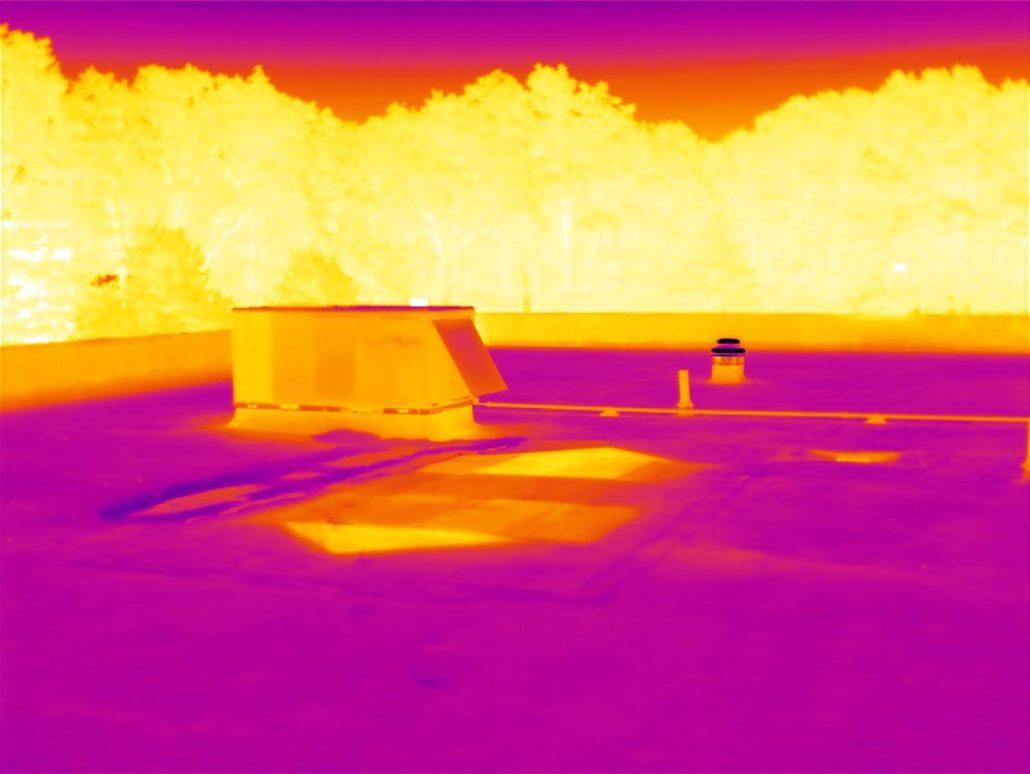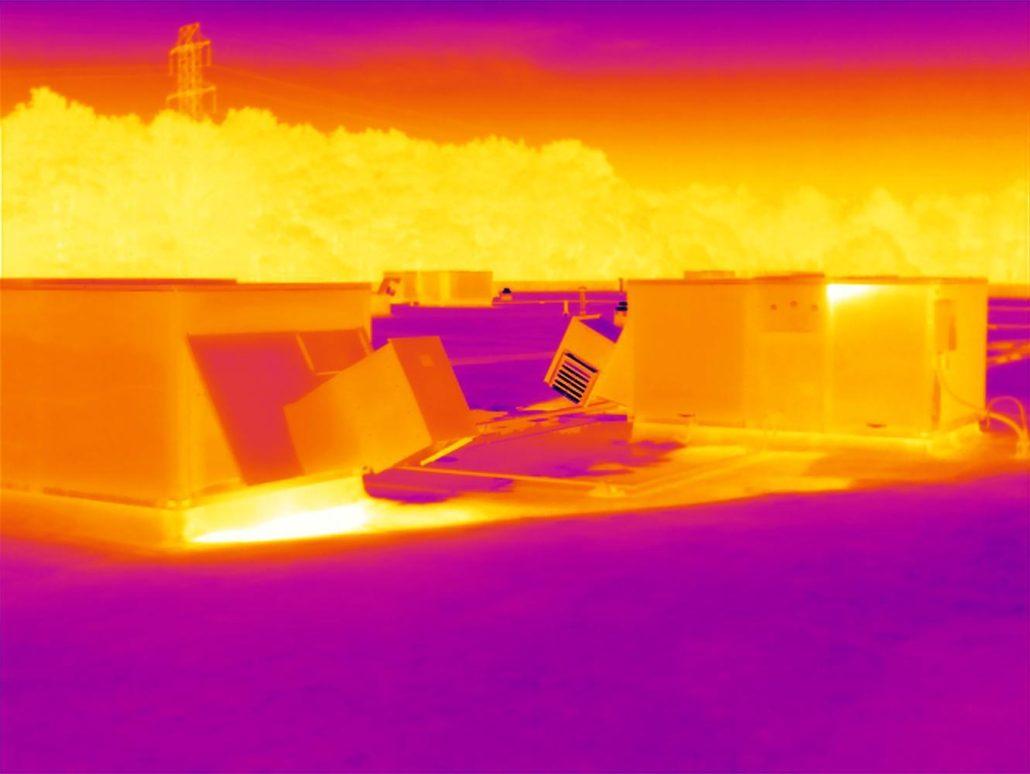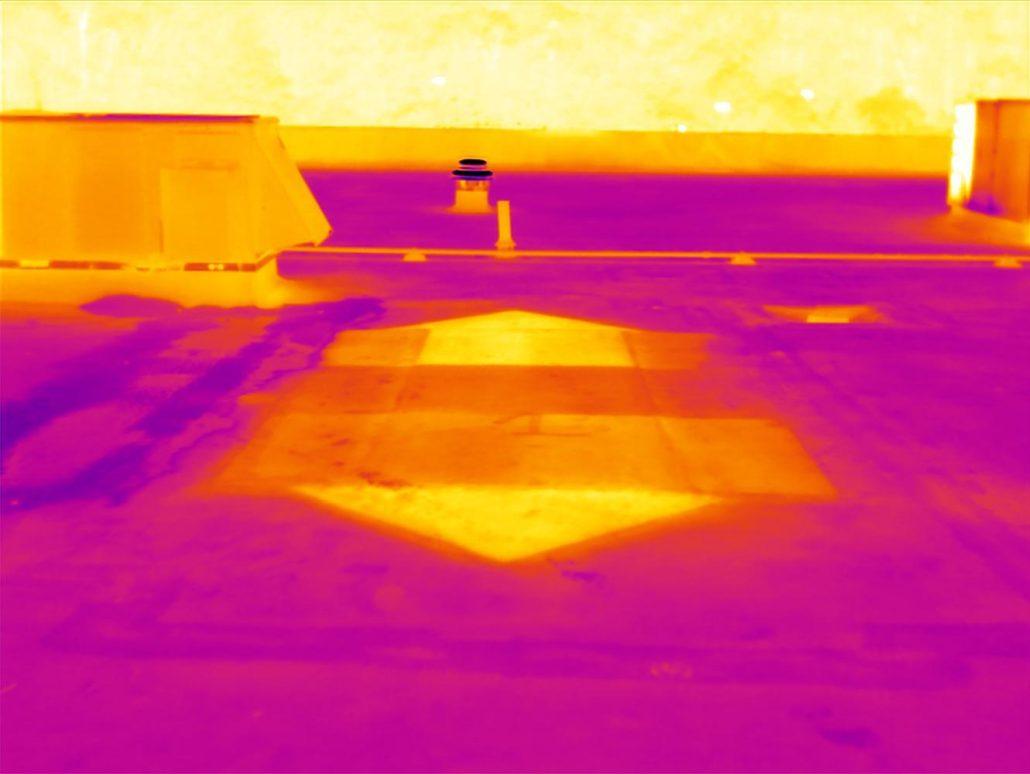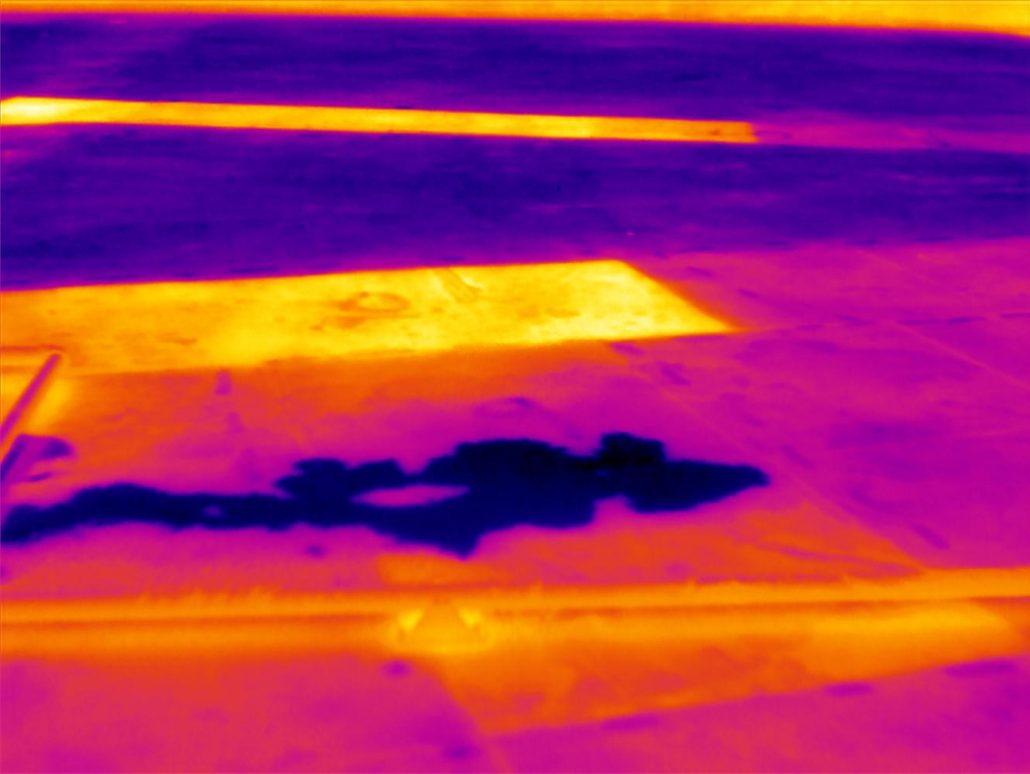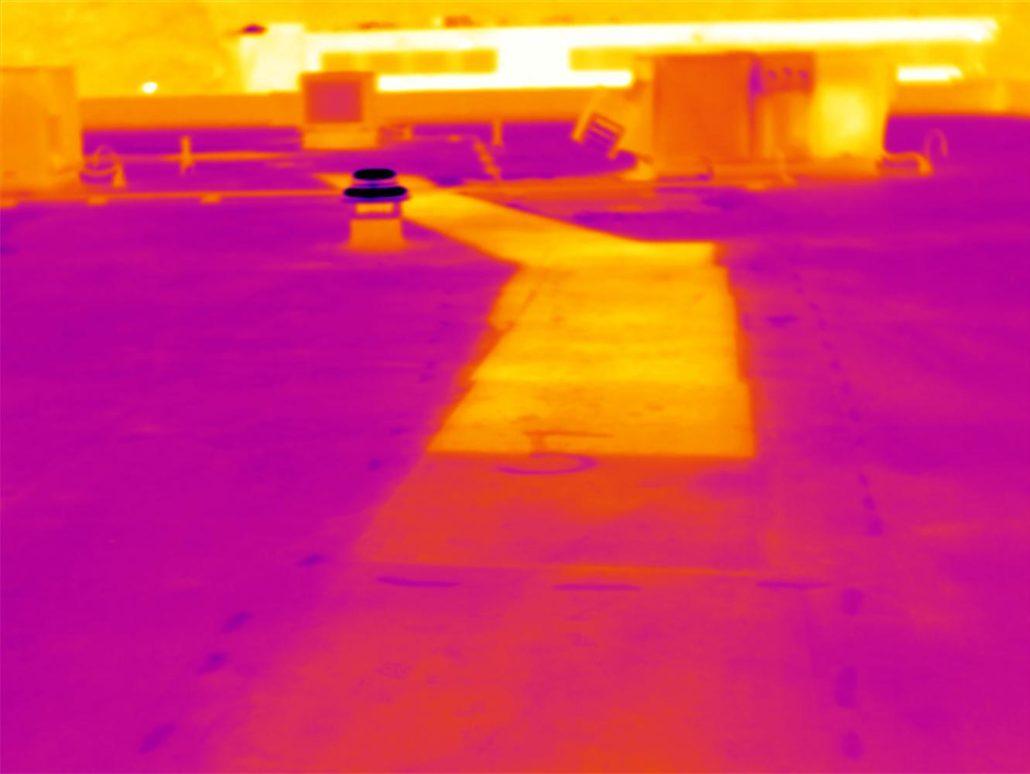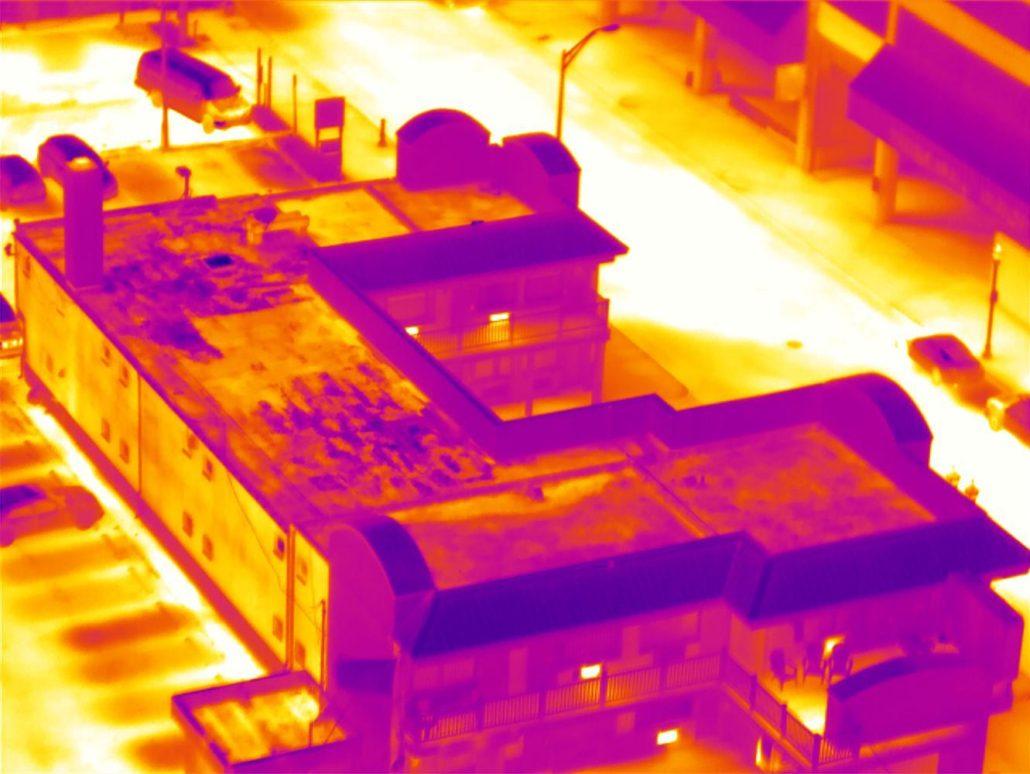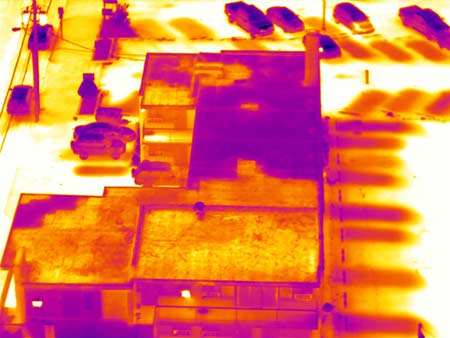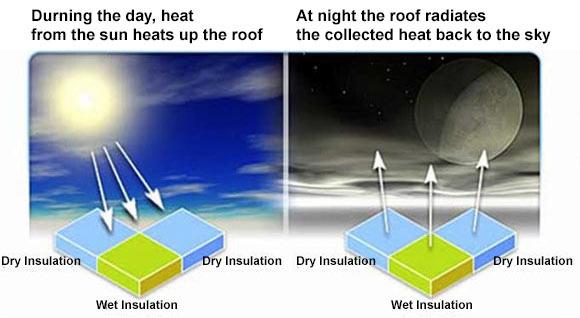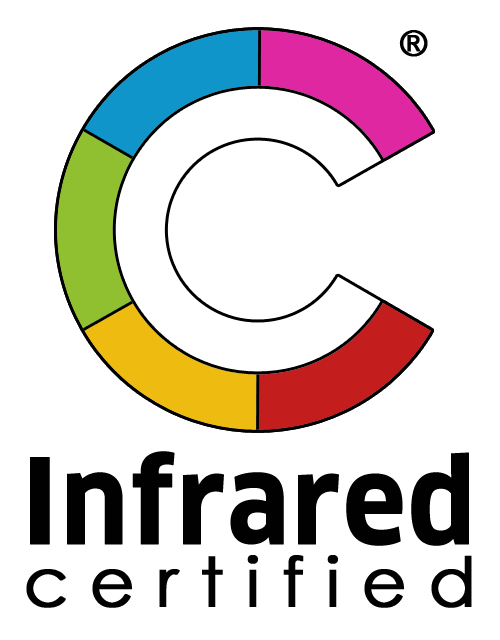Infrared Roof Moisture Scan, Infrared Roof Inspection Services
The infrared roof scan is a proven method for identifying and defining moisture problems in your roof. This will enable you to develop a more sophisticated roof asset management program, make more informed decisions regarding roof budgets and will help you plan repairs.
As water enters your roof through the waterproofing layer(s) by tears, cuts, poorly sealed penetrations, failed flashings and caps, the insulation below can become laden with water and trapped in the roof substrate. If left in disrepair, the concrete deck absorbs or traps water, the wood deck rots. The metal deck rusts, and water intrudes into the building’s interior. An infrared roof scan is useful in locating these moisture intrusions.
Some of the smooth-surfaced roofs, both single-ply and reflective roof coating such as metallic (Aluminum), silicone base and elastomeric coatings, can present significant challenges during an infrared inspection due to reflectivity of the roof membrane or coating.
So when performing infrared inspections of smooth-surfaced roofs, or reflective coating, a short or mid wave thermal imager can significantly outperform a long wave imager. We use a high end imager for NJ Infrared roof Moisture Survey Inspections.
By using infrared thermography via the infrared roof scan, we find the trapped moisture and mark the wet areas so that repairs can be made surgically. This can save you money because you may not have to replace the roof as soon. By marking paint directly on the roof, repair areas can be seen by anyone standing on the roofs after the survey is performed.
How Infrared Thermography Works
During the day, the sun radiates energy onto the roof and into the roof substrate, and then at night, the roof radiates the heat back into outer space. This is called radiational cooling. Areas of the roof that are of a higher mass (wet) retain this heat longer than that of the lower mass (dry) areas. Infrared imagers can detect this heat and “see” the warmer, higher mass areas, during the “window” of uneven heat dissipation. Heat loss and other IR services can be performed at the same time.
By using the information generated by an Infrared Roof Scan report, the owner’s roofing professional can recommend cost-effective removal and replacement of wet components. Problem areas can now be corrected without the tremendous expense of replacing the entire roof.

